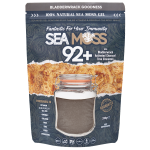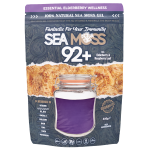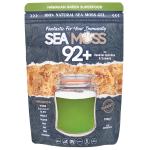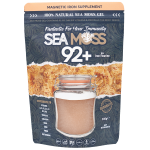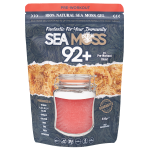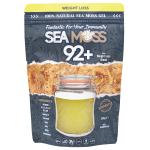OSTEOARTHRITIS
OSTEOARTHRITIS
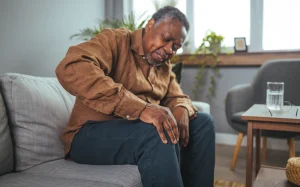
Osteoarthritis is a degenerative joint disease characterised by the breakdown of the protective tissue at the ends of bones. Over time, the cushioning cartilage deteriorates, leading to joint pain, stiffness, and reduced mobility. It commonly affects weight-bearing joints such as the knees, hips, and spine, as well as the hands and other joints.
Symptoms include joint tenderness, reduced flexibility, and inflammation. Osteoarthritis is primarily caused by ageing, joint wear and tear, genetic factors, obesity, and joint injuries.
While there is no cure, treatment options include pain relief medications, anti-inflammatory gels, physiotherapy, hydrotherapy, exercise, and maintaining a healthy weight. Natural remedies such as Cats Claw, Willow bark, ginger, turmeric, and green tea may provide relief.
Adequate intake of vitamins and minerals like calcium, vitamin D, and omega-3 can also support joint health.
Working closely with healthcare professionals is essential for managing osteoarthritis effectively.
Description
Osteoarthritis is a common form of arthritis that primarily affects the joints, causing pain, stiffness, and reduced mobility. It is a degenerative disease that occurs when the protective cartilage that cushions the ends of the bones wears down over time.
As a result, the bones may rub against each other, leading to pain, inflammation, and the formation of bone spurs. Osteoarthritis most commonly affects weight-bearing joints such as the knees, hips, and spine, but it can also impact the hands and other joints.
The exact cause of osteoarthritis is not fully understood, but factors such as ageing, genetics, joint injury or overuse, obesity, and certain metabolic conditions can contribute to its development.
While there is no cure for osteoarthritis, treatments aim to manage symptoms and improve joint function through a combination of medication, physical therapy, exercise, lifestyle modifications, and assistive devices.
The symptoms of osteoarthritis can develop gradually over time, and they typically affect the joints. Common symptoms associated with osteoarthritis include:
- Joint Pain: Pain in the affected joints is a hallmark symptom of osteoarthritis. It often starts as a dull ache and can progress to more severe and persistent pain.
- Bone Degeneration in Joints: Osteoarthritis involves the breakdown of the cartilage that covers the ends of bones in the joints. As cartilage wears away, bone degeneration can occur, leading to changes in the joint structure.
- Joint Tenderness: The affected joints may become tender to the touch, and pressure on these areas can exacerbate discomfort.
- Lack of Flexibility: As osteoarthritis progresses, joint flexibility may decrease, making it challenging to move the joint through its full range of motion.
- Squeaky Feeling: Some individuals with osteoarthritis report a sensation of "creaking" or "grating" in the affected joints, which is due to the loss of smooth cartilage surfaces.
- Osteophytes: Osteophytes, also known as bone spurs, can develop as the body's response to joint degeneration. These bony growths can cause further joint pain and limit mobility.
- Inflammation: While osteoarthritis is primarily characterised by the degeneration of cartilage (unlike inflammatory arthritis like rheumatoid arthritis), inflammation can occur in the affected joints, leading to swelling and discomfort.
- Decreased Mobility: Osteoarthritis can significantly reduce joint mobility, making everyday activities such as walking, climbing stairs, or even grasping objects more challenging.
Osteoarthritis can be classified as:
- Primary Osteoarthritis: This is the most common type of osteoarthritis and typically occurs with age-related wear and tear of the joints. It has no specific underlying cause other than the natural ageing process and is commonly seen in weight-bearing joints such as the knees, hips, and spine.
- Secondary Osteoarthritis: Secondary osteoarthritis occurs because of an underlying condition or factor that damages the joint cartilage. Causes include joint injury, misalignment, obesity, inflammatory joint diseases, metabolic disorders, infections, and other joint diseases.
The development of osteoarthritis is influenced by various factors, and it is often considered a multifactorial condition. Here are some common causes and contributing factors associated with osteoarthritis:
- Ageing and Wear of the Joints: Osteoarthritis is more common as individuals age, and the wear and tear on joints over time can lead to the breakdown of cartilage and other structural changes.
- Cartilage Breakdown: The primary feature of osteoarthritis is the breakdown of cartilage, the smooth, protective tissue that covers the ends of bones in the joints. As cartilage wears away, it can result in joint pain and dysfunction.
- Genetic Predisposition: Some people may have a genetic predisposition to osteoarthritis. Certain genetic factors can increase the risk of developing the condition.
- Overweight: Excess body weight can place additional stress on weight-bearing joints, such as the knees and hips. This increased mechanical stress can accelerate the degeneration of cartilage and contribute to the development of osteoarthritis.
- Joint Injuries: Past joint injuries or trauma, such as fractures, dislocations, or ligament tears, can increase the likelihood of developing osteoarthritis in the affected joint.
- Physical Repetition at Occupation: Occupations or activities that involve repetitive movements or joint stress can contribute to the development of osteoarthritis, particularly in the joints involved in those activities.
- Repetitive High-Impact Exercise: Engaging in high-impact sports or activities over a long period, especially without proper joint protection, can contribute to the wear and tear of joint cartilage.
- Bone Deformities: Certain bone deformities or abnormalities can increase the risk of osteoarthritis, as they can affect joint alignment and function.
Medical treatment for osteoarthritis focuses on managing symptoms, reducing pain, and improving joint function. Here are some common medications and treatment approaches used for osteoarthritis:
- Paracetamol (Acetaminophen): This is often one of the first-line medications for mild to moderate osteoarthritis pain.
- Nonsteroidal Anti-Inflammatory Drugs (NSAIDs): NSAIDs like ibuprofen, diclofenac, and naproxen can help reduce pain and inflammation. They are available in both over-the-counter and prescription forms.
- Topical NSAIDs: These are available as gels, creams, or patches and can be applied directly to the affected joint for localised pain relief.
- Opioids: In cases of severe pain that doesn't respond to other treatments, opioids may be prescribed. However, they are typically used cautiously due to the risk of dependence and side effects.
- Corticosteroid Injections: Corticosteroid injections can be administered directly into the joint to reduce inflammation and provide temporary pain relief.
- Hyaluronic Acid Injections: These injections, also known as viscosupplementation, can provide lubrication and cushioning to the affected joint, potentially reducing pain and improving joint function.
- Physical Therapy: Physical therapists can develop personalised exercise and stretching programs to improve joint flexibility, strength, and mobility.
- Occupational Therapy: Occupational therapists can help individuals learn strategies to manage daily activities with less joint pain and strain.
- Weight Management: Achieving and maintaining a healthy weight can reduce the stress on weight-bearing joints, such as the knees and hips.
- Assistive Devices: Braces, splints, canes, and other assistive devices may be recommended to reduce joint strain and improve mobility.
- Surgical Interventions: In cases of severe joint damage and pain that doesn't respond to other treatments, surgical options like joint replacement surgery may be considered.
- Lifestyle Modifications: Making lifestyle changes such as regular low-impact exercise, maintaining a healthy diet, and avoiding excessive joint stress can help manage osteoarthritis symptoms.
Natural treatments and lifestyle modifications for osteoarthritis can help improve joint health. Here are some natural treatment options:
- Physiotherapy: Physical therapy exercises and techniques can help improve joint flexibility, strength, and range of motion. A physical therapist can develop a tailored exercise program to address specific joint issues.
- Hydrotherapy: Water-based exercises and swimming can be gentle on the joints while providing a good workout. The buoyancy of water reduces the impact on joints.
- Regular Low-Impact Exercise: Activities like walking, cycling, and tai chi are low-impact exercises that can help maintain joint mobility and strengthen the muscles around the affected joints.
- Maintaining a Healthy Weight: Achieving and maintaining a healthy weight can reduce the strain on weight-bearing joints, such as the knees and hips. Weight loss, if necessary, can significantly improve joint function.
- Meditation: Mindfulness meditation and relaxation techniques can help manage pain and reduce stress, which can exacerbate osteoarthritis symptoms.
- Acupuncture: Some individuals find acupuncture sessions helpful for managing pain and improving overall well-being.
- Diet Rich in Omega-3 Fatty Acids: Omega-3 fatty acids, found in fatty fish (e.g., salmon, mackerel), flaxseeds, and walnuts, have anti-inflammatory properties that may benefit joint health.
- Heat and Cold Therapy: Applying heat or cold packs to the affected joints can help relieve pain and reduce inflammation. Heat can relax muscles, while cold can numb the area and reduce swelling.
- Balanced Diet: A nutritious diet that includes a variety of fruits, vegetables, whole grains, and lean proteins can support overall health and may benefit joint function.



